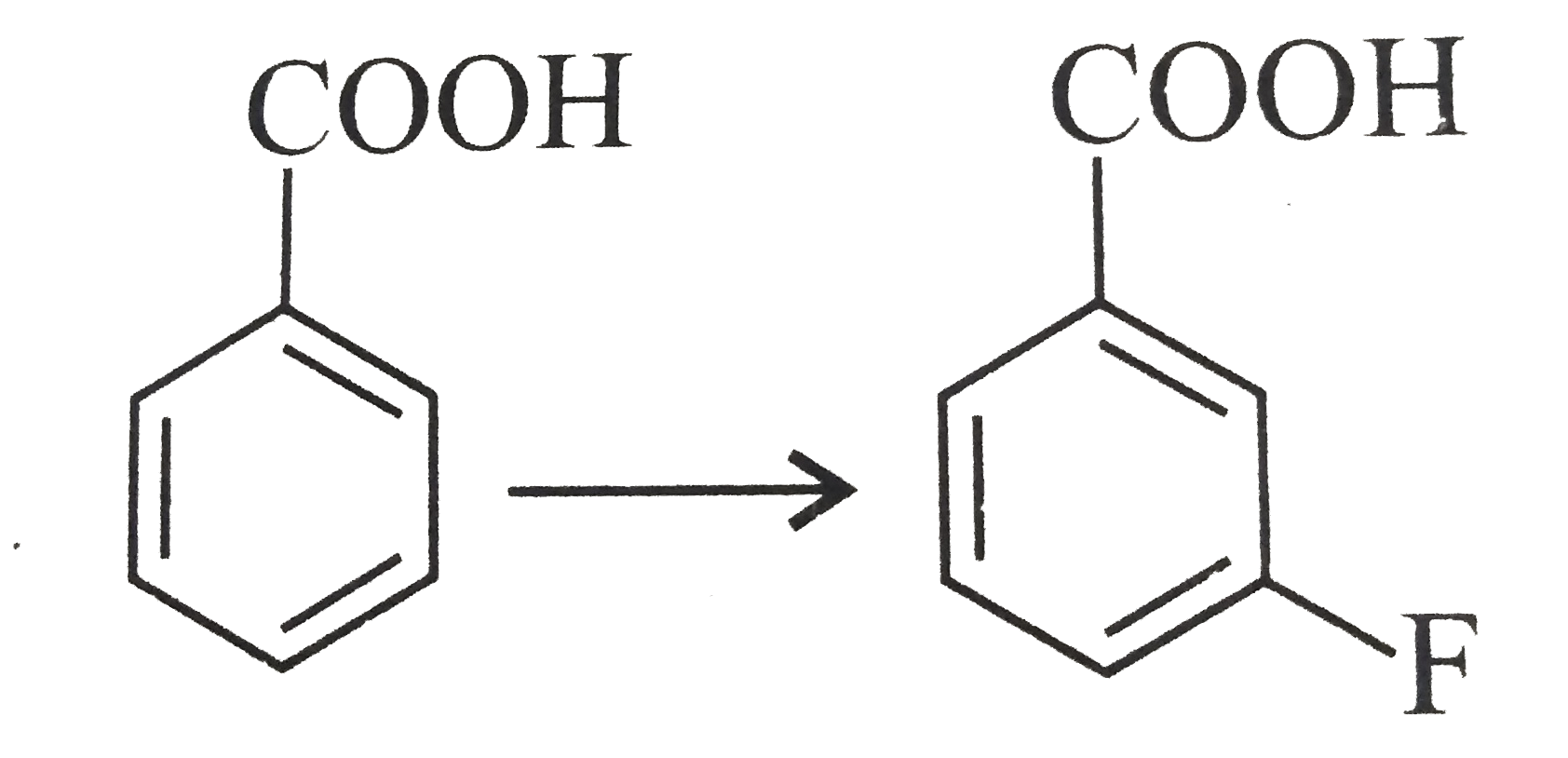Convert chloroform to chlorobenzene in three steps using appropriate reagents .
To convert chloroform (CHCl₃) to chlorobenzene (C₆H₅Cl) in three steps, we can follow the outlined process below:
Step 1: Conversion of Chloroform to Acetylene
1. Reagents: React chloroform (CHCl₃) with silver (Ag) to remove chlorine atoms.
2. Reaction: The reaction involves the dehydrohalogenation of chloroform. When chloroform is treated with silver, it loses two moles of chlorine gas (Cl₂) and forms acetylene (C₂H₂).
2CHCl3+6Ag→C2H2+6AgCl
Here, acetylene is formed as a product.
Step 2: Formation of Benzene from Acetylene
1. Reagents: Heat acetylene (C₂H₂) in the presence of a red-hot iron tube.
2. Reaction: Acetylene undergoes cyclotrimerization to form benzene (C₆H₆).
3C2H2Fe (red hot)−−−−−−−→C6H6
This reaction involves the formation of a cyclic structure, resulting in benzene.
Step 3: Conversion of Benzene to Chlorobenzene
1. Reagents: React benzene (C₆H₆) with chlorine (Cl₂) in the presence of a Lewis acid catalyst, such as ferric chloride (FeCl₃).
2. Reaction: The electrophilic aromatic substitution occurs, where one hydrogen atom on benzene is replaced by a chlorine atom, resulting in chlorobenzene (C₆H₅Cl).
C6H6+Cl2FeCl3−−−→C6H5Cl+HCl
Summary of Steps
1. Chloroform to Acetylene: 2 CHCl₃ + 6 Ag → C₂H₂ + 6 AgCl
2. Acetylene to Benzene: 3 C₂H₂ → C₆H₆ (using Fe red hot)
3. Benzene to Chlorobenzene: C₆H₆ + Cl₂ → C₆H₅Cl (using FeCl₃)
1. Reagents: React chloroform (CHCl₃) with silver (Ag) to remove chlorine atoms.
2. Reaction: The reaction involves the dehydrohalogenation of chloroform. When chloroform is treated with silver, it loses two moles of chlorine gas (Cl₂) and forms acetylene (C₂H₂).
2CHCl3+6Ag→C2H2+6AgCl
Here, acetylene is formed as a product.
1. Reagents: Heat acetylene (C₂H₂) in the presence of a red-hot iron tube.
2. Reaction: Acetylene undergoes cyclotrimerization to form benzene (C₆H₆).
3C2H2Fe (red hot)−−−−−−−→C6H6
This reaction involves the formation of a cyclic structure, resulting in benzene.
1. Reagents: React benzene (C₆H₆) with chlorine (Cl₂) in the presence of a Lewis acid catalyst, such as ferric chloride (FeCl₃).
2. Reaction: The electrophilic aromatic substitution occurs, where one hydrogen atom on benzene is replaced by a chlorine atom, resulting in chlorobenzene (C₆H₅Cl).
C6H6+Cl2FeCl3−−−→C6H5Cl+HCl
1. Chloroform to Acetylene: 2 CHCl₃ + 6 Ag → C₂H₂ + 6 AgCl
2. Acetylene to Benzene: 3 C₂H₂ → C₆H₆ (using Fe red hot)
3. Benzene to Chlorobenzene: C₆H₆ + Cl₂ → C₆H₅Cl (using FeCl₃)
Topper's Solved these Questions
- HALOALKANES AND HALOARENES BOOK - AAKASH INSTITUTECHAPTER - HALOALKANES AND HALOARENES EXERCISE - EXERCISE
40 Videos
- HALOALKANES AND HALOARENES BOOK - AAKASH INSTITUTECHAPTER - HALOALKANES AND HALOARENES EXERCISE - ASSIGNMENT SECTON - A
45 Videos
- HALOALKANES AND HALOARENES BOOK - AAKASH INSTITUTECHAPTER - HALOALKANES AND HALOARENES EXERCISE - Assignment (Section - I) (Aakash Challenger Questions)
5 Videos
- GENERAL PRINCIPLES AND PROCESSES OF ISOLATION OF ELEMENTSBOOK - AAKASH INSTITUTECHAPTER - GENERAL PRINCIPLES AND PROCESSES OF ISOLATION OF ELEMENTSEXERCISE - Try Yourself
33 Videos
- HYDROCARBONSBOOK - AAKASH INSTITUTECHAPTER - HYDROCARBONSEXERCISE - Assignment(Section - D) (Assertion -Reason Type Question)
24 Videos
Similar Questions
Knowledge Check
In the preparation of chlorobenzene from aniline, the most suitable reagent is
Achlorine in the presence of ultraviolet lightBchlorine in the presence of AlCl3Cnitrous acid followed by heating with Cu2Cl2DHCl and Cu2Cl2In the preparation of chlorobenzene from aniline, the most suitable reagent is
AChlorine in the presence of ultraviolet lightBChlorine in the presence of AlCl3CNitrous acid followed by heating with Cu2Cl2DHClandCu2Cl3In order to convert aniline into chlorobenzene the reagents needed are
ACuClBNaNO2/HCl and CuClCCl2/CCl4DCl2/AlCl3
Convert chlorobenzene to 4- nitrophenol
View Solution
Complete the following with appropriate reagent:
View SolutionConvert the following (in not more than three steps):
 .
.
View SolutionFor converting aniline into chlorobenzene which of the following regent is not used
View SolutionPhenylmethyl ketone can be converted into ethylbenzene in one step by which of the following reagents?
View Solution


